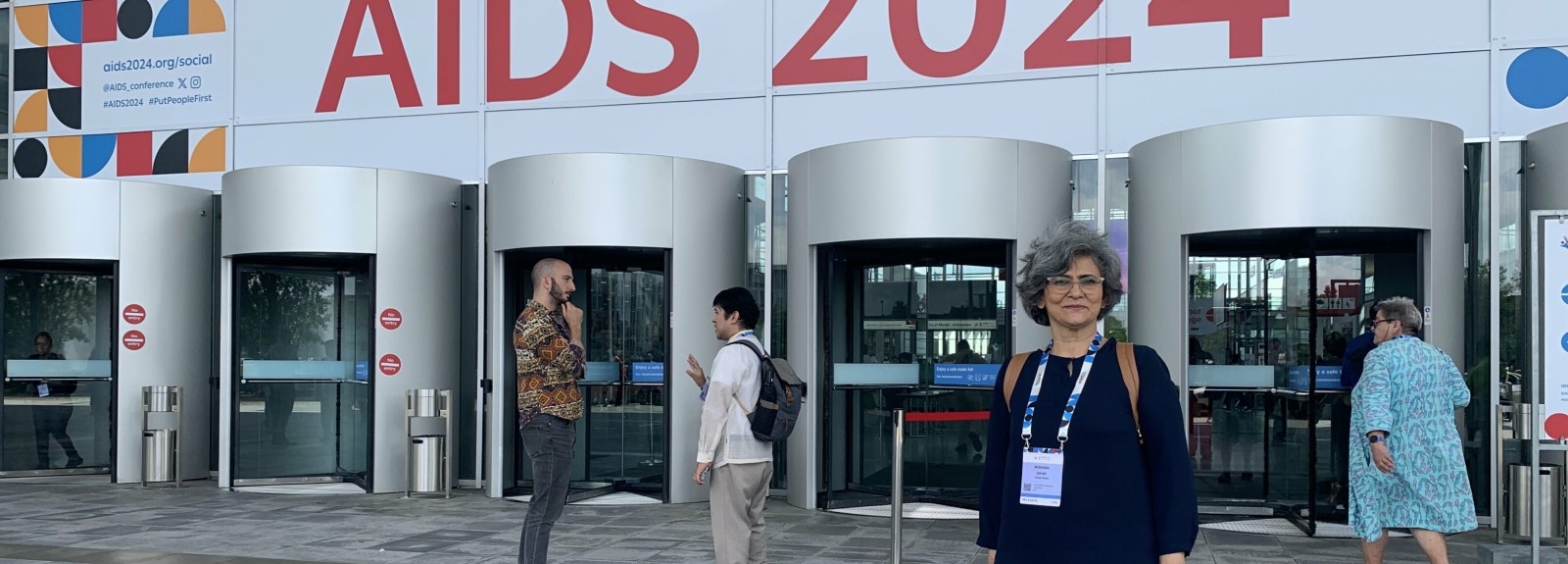This blog was authored by Noshaba Zafar, Senior Technical Advisor for violence against women and girls and Global Practice Head for Gender and Social Inclusion.
---
I recently had the opportunity to present a poster on "Tackling Twin Epidemics—HIV and violence against women and girls" at the International AIDS Conference in Munich. The conference brought together thousands of researchers, policymakers, development professionals, activists, HIV survivors, and health care professionals from across the globe, all united by a common goal: to combat the ongoing HIV epidemic and address the critical issues that intersect with it, including violence against women and girls.
The Twin Epidemics: A Persistent Challenge
The two crises of HIV and violence against women and girls, often referred to as “twin epidemics,” are deeply interconnected. violence against women and girls heightens the vulnerability of individuals—especially women, girls, and those with diverse gender identities—to HIV infection, while living with HIV can increase the risk of experiencing violence. Despite notable advancements in HIV treatment and prevention, violence against women and girls continues to pose a significant barrier to eradicating the HIV epidemic.
During my time at the conference, I highlighted the following key points:
- The Intersectionality of HIV & violence against women and girls: violence against women and girls not only escalates the risk of acquiring HIV but also exacerbates outcomes for those living with the virus. LGBTQI+ individuals, as well as women and girls who face violence, are more likely to engage in high-risk behaviors, encounter limited access to HIV prevention services, and face challenges with treatment adherence. Conversely, those living with HIV often face an increased risk of violence due to stigma and discrimination.
- Community-Based Interventions: Addressing these twin epidemics requires community-driven approaches. Programs that empower women and engage men as allies in the fight against violence against women and girls have shown great promise. It is vital to integrate violence against women and girls services with HIV care to create a comprehensive response that meets the needs of survivors and those at risk.
- Policy and Advocacy: Strong advocacy for policies that protect the rights of women and girls is essential. Governments and international organizations must prioritize funding for violence against women and girls prevention and response initiatives within the broader HIV/AIDS framework. Collaborative efforts across sectors—health, justice, education, and social services—are necessary to foster an environment where women and LGBTQI+ communities can live free from violence and the threat of HIV.
Insights from the Conference
The 2024 International AIDS Conference was not just a platform to share our critical work, it was also as an invaluable opportunity to learn from others and explore the latest research and innovations.
Here are some key takeaways that made a lasting impact on me:
- Innovation in HIV Prevention: A strong focus on cutting-edge technologies and approaches for HIV prevention emerged, particularly long-acting injectable PrEP (pre-exposure prophylaxis) and significant advancements in vaccine research. These developments hold the potential to transform the fight against HIV.
- The Role of Youth: Young people, particularly those from high-burden regions, played a significant role in the conference. Their voices and experiences are crucial in shaping policies and programs that are both relevant and effective for the next generation.
- Stigma and Discrimination: Despite the progress made, stigma and discrimination against those living with HIV and individuals affected by violence against women and girls persist. Numerous sessions concentrated on strategies to combat these issues, highlighting the necessity for education, legal protections, and community engagement to drive meaningful change.
- Intersectionality Matters: The intersection of HIV with other social determinants of health—such as poverty, race, and sexual orientation—was a recurrent theme. Addressing these intersections is key to making progress in both the HIV and violence against women and girls arenas.
Moving Forward: What’s Next?
Returning from Munich, I feel energized and inspired by the collective efforts to combat the twin epidemics of HIV and violence against women and girls. However, there’s still much work ahead. My focus will be on strengthening partnerships with organizations working at the intersection of these issues, as collaboration will lead to more effective interventions. Additionally, I aim to raise awareness about the connection between HIV and violence against women and girls through advocacy efforts directed at policymakers, donors, and the public to keep these issues prominent on the global health agenda.
Empowering communities will also be a priority, supporting initiatives that uplift women and engage men in the fight against violence against women and girls, as these are often the most effective for creating sustainable change. The journey ahead is long, but the momentum from the International AIDS Conference 2024 gives me hope. With continued dedication and collaboration, we can make significant strides toward a future free from both violence and HIV.

